The Legend
At the end of the Heian era, the two clans of Genji and Taira waged a war against each other for control of Japan. The previously ruling Taira clan was finally toppled by the Genji clan, and one of the most celebrated worries who had ensured his clan’s victory was a samurai named Minamoto-no-Yoshitsune. After achieving victory during the war, Yoshitsune came into conflict with his brother Yoritomo who had ascended as the de facto leader of the clan. Yoshitsune fled the capital, escaping north to seek refuge with the Fujiwara clan who were old allies. Yoritomo’s forces gave chase though and caught up with Yoshitsune in what is now the prefecture of Iwate. After being betrayed by the Fujiwara clan and surrounded by his treacherous brother’s troops Yoshitsune is said to have committed suicide at Hiraizumi.
But that is not where the legend ends. For centuries, the people of the Tohoku region (NE Japan) have passed down from person to person, family to family, the tale of Yoshitsune’s Flight North that tells a different story. Instead of committing suicide at Hiraizumi, the legend states that Yoshitsune was able to escape in secret. Fleeing by sea north, he is said to have landed in Hachinohe, where he then proceeded to travel to Tappi (the tip of Aomori Prefecture) and cross the strait of Tsugaru to finally escape to safety in Hokkaido. Some legends go even further and state that after reaching Hokkaido, Yoshitsune traveled to Sakhalin in Russian and from there crossed into Mongolia where he became known as Genghis Khan.
Scattered about Hachinohe there are still fragments and scenes from this legend that can be felt. For over 800 years families have passed down stories and tales of Yoshitsune resting at such and such place or finding shelter at this and that temple. Walking through these areas you too can feel a slight taste of the adventure, romance, and drama of an epic legend that has been centuries in the making.
Follow the Footsteps of Yoshitsune’s Journey through Hachinohe
1 The Kumano Shrine
After escaping from Hiraizumi, Yoshitsune fled north by boat leaving from the port at Kesennuma and arriving at the Tanesashi Coast. Once on land again, Yoshitsune is said to have rested at this shrine on his journey through Hachinohe.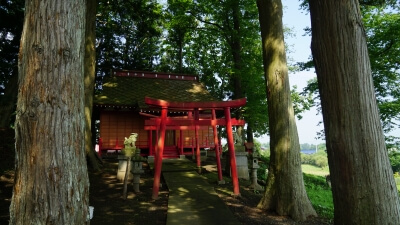
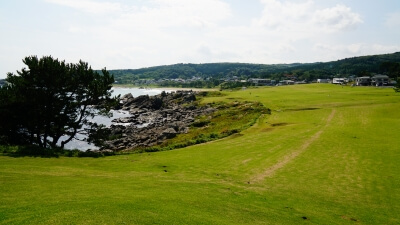
2. Genji Kakoinai
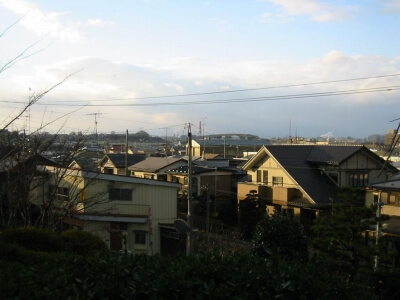
After arriving by sea, Yoshitsune then traveled by land north towards Hachinohe. Arriving at the then village of Shirogane, he set up a temporary residence, and to this day there is an area in Shirogane called ‘Genji Kakoinai’ or the ‘Genji Residence’.
3. Tategoshi
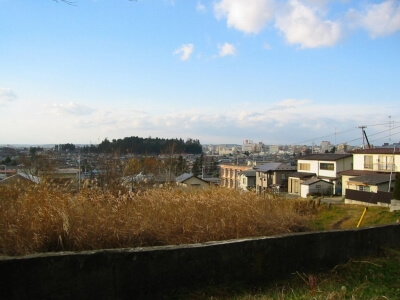
According to the legends told in that area, when Yoshitsune arrived in the area, he forged upstream the Niida river, and built his first house which he called ‘Tategoshi’. Yoshitsune and his party were said to have lived here for a little of a year before moving to the Takadate Residence.
4. Takadate
According to the record 「History of the Ruike Inari Daimyojin Shrine 」(currently stored in the Ogami shrine) when Yoshitsune first arrived in Hachinohe he lived in a small residence at Tategoshi, but after living there for a little more than a year he took residence at Takadate. Yoshitsune found Takadate to be superior because you could see further out from its position and as the area opened wider before it, it would be more convenient for families and farming in the future. The retainers thereafter called the area ‘the palace at Takadate’.5. Hotaru-saki (firefly point)
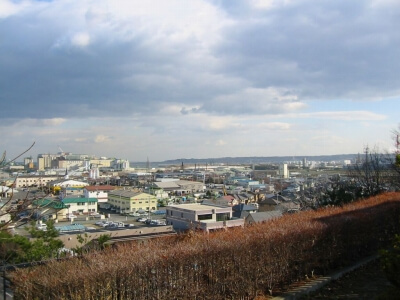
According to legends told by people in this area, while living in Takadate Yoshitsune came upon an area where fireflies swarmed at night, starting around the beginning of May. Finding the sight very beautiful he named the area firefly point.
6. The Yadome (arrow reflecting) Spring
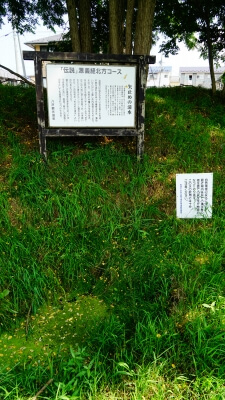
According to legends told by people in this area, when Yoshitsune was living in this area at Takadate, one of his loyal retainers named Benkei fired off an arrow one day. The arrow raced off and flew 3,000 meters, flying over the Mabechi River and plunging deep into the ground. When they went to retrieve the arrow, a spring welled up and gushed forth when it was pulled from the ground. Thus the area was named the Yadome Spring or Arrow Stopping Spring. Since long ago it has quenched the thirst of many passersby who were traveling the road and was used to produce a local sake called Inagawa.
7.The Ogami Shrine
In 1205 the wife of Yoshitsune passed away and was interred at Kyogasaki, and venerated at the Horyo Daimyoujin shrine, which is now the Ogami Shrine. The shrine is said to contain a favorite mirror of Yoshitsune’s wife and holds the 「History of the Ruike Inari Daimyojin Shrine 」, which is one of the sources of the Legend of Yoshitsune’s Flight North.
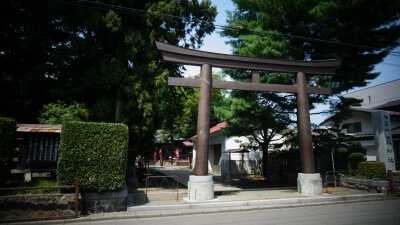
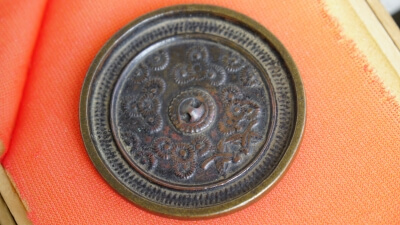
8. Miyagi Shrine and Benkei’s Stone
The Miyagi Shrine sits atop Miyagi hill next to what is now Hachinohe City Hall. On the grounds, there is an interesting rock that has what looks like footprints impressed into it in several different places. Legend has it that these footprints were made by the warrior monk Benkei. Benkei was a loyal retainer of Yoshitsune and also know to showoff his terrible strength from time to time, so stories posit that he was able to kick this rock so powerfully that his footprints were left in place.
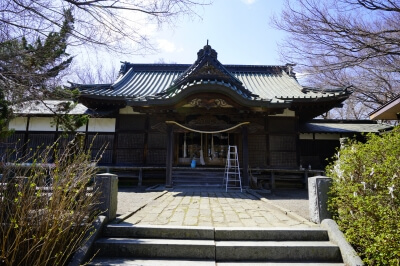
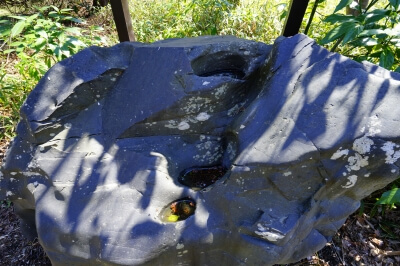
9. The Koda Hachiman Shrine
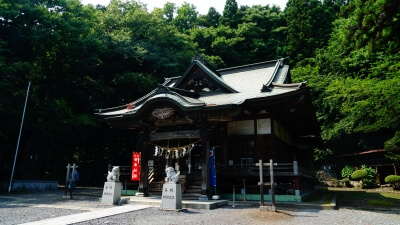
While living in Hachinohe, Yoshitsune and his party were said to have been patrons of this shrine. They presented to the shrine a statue of Bishamonten that they had brought so that it could be enshrined alongside Hachiman at the shrine. They also donated a copy of the Great Perfection of Wisdom Sutra and the sutra box that the shrine still holds in reverence to this day.
10. Kodamura
According to the「History of the Ruike Inari Daimyojin Shrine 」, which is one of the sources of the Legend of Yoshitsune’s Flight North, Yoshitsune brought with him a statue of Bishamonten from Kurama when he fled north, and donated this statue to the Koda shrine. He then began to develop rice patties in front of the shrine, so that the shrine and the area became known as Koda (or small rice paddy).
11. The Fuji-ga-Mori Inari Shrine
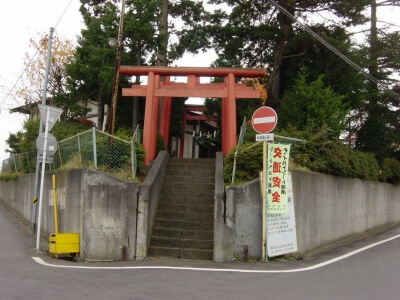
While living in Hachinohe, Yoshitsune dispatched one of his trusted retainers named Hitachibo to bring back dirt from the famous Inari shrine in Kyoto. When he returned with a handful of dirt from the Kyoto Inari shrine, they buried it and built a new shrine on the land in May of 1191. The shrine became known as the Fuji-ga-Inari Shrine and Yoshitsune was said to have visited it frequently. During his visits, he would place his ceremonial dress or hunting clothes in a small thatched hut, which would later be called boushi-yashiki or ‘court-hat manor’.
12. Boushi-Yashiki (Court-hat Manor)
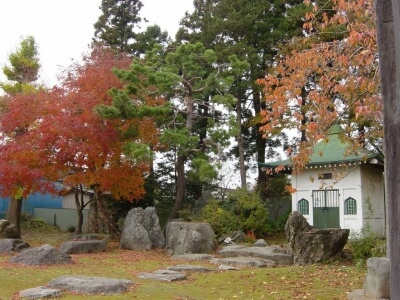
According to the「History of the Ruike Inari Daimyojin Shrine 」when Yoshitsune and his retainers traveled to the Fuji-ga-Mori Inari Shrine to pray, they began to build small thatch huts in succession in the area of town that is now known as Ruike, for the journey between the two was tiring. These huts were said to resemble actual houses and became to be known as ruike-no-monodomo. Another story is that they simply erected temporary wooden structures on which to hang their formal court hats and hunting clothes on before they entered the shrine so that the huts collectively became as ‘court hat manor’. The spot is now the site of Basho park in Hachinohe, and whichever the story both have strong connections to the Inari shrine.
13. Chojasan
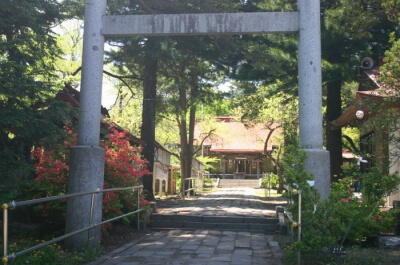
According to legend, two of Yoshitsune loyal retainers, named Itabashi Choji and Kisanta, were sent to the area to construct an area in which for him to live. They cleared the area, and planted trees and made rough wooden fences to segregate and area and create a demarcated area where people would enter. Long ago this area was known as Choji hill, after one of the loyal retainers, but eventually would become known as Choja and become the site of the current Choja shrine.
